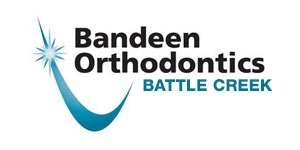Early orthodontic treatment with Bandeen Orthodontics of Three Rivers
Even though a lot of kids have braces or expanders around 8 through 10 years of age, most of those kids will have treatment a second time when they are around 12 or 13 years of age. In the end, people have treatment once at around 12 or 13 years of age will look just as good, if not better, than people who had treatment twice.
So, why would anyone have treatment twice if it will look just as good doing it once? There are three reasons to have early treatment:
- Extreme Self-Consciousness: Someone is too self-conscious to wait.
- Emergencies: There will be pain or damage unless we change something.
- Airway Concerns: We see kids who have sleep apnea or concerns due to narrowness of their airway. Many kids with sleep apnea have normal size mouths but with large tonsils and adenoids. Other kids have small mouths and can see an improvement in their airway by making their mouths bigger. Either way, kids with airway concerns can often benefit both from orthodontics to widen their airway as well as an evaluation with their family doctor or an Ear, Nose, & Throat doctor (ENT) to see if there is something blocking their airway.
It’s typically not harmful to have treatment twice, but the question is more “is it necessary?” We can see kids look better after having treatment at around 8-10 years of age, but that doesn’t mean that they wouldn’t look just as good by the time they are finished with a single time in treatment around age 12-13 years of age.
There are times that treatment twice can be a good idea (as described above), but, in reality, treatment twice is rarely necessary. A lot of kids have treatment twice because their families were not presented with the option to have waited. We agree with the American Orthodontics Association and the American Association of Pediatric Dentists by recommending that kids should be seen for an orthodontic evaluation by around age 7 years of age. That doesn’t mean that everyone should have treatment at age 7 years, but it does mean that everyone should be checked in case your child is one of the few who might need some help early. About one in 20 kids who see us can benefit from treatment twice. We see a lot of kids for second opinions who were told that they needed to start right away only to give them the good news that they actually can wait. Realistic discussion of the big picture is really important.
Much of what we do for younger kids is check that they are growing well. We can answer questions for families as to whether or not the teeth are developing well and give advice on what to be watching for as the kids grow. Again, most kids won’t benefit from orthodontic treatment until around 12 or 13 years of age, but early checking is a really good idea.
Early orthodontic treatment when it matters, not just to be a busier office:
We limit early treatment to situations where it truly matters and where it can truly make an actual difference in the long term. The question is not whether early treatment will make things look better in the short term, rather, the question is whether or not early treatment will result in a better result in the long term… and then let you decide what is best for your family.
Certainly, we will provide early treatment in circumstances where patients are self-conscious, an emergency circumstance requires action, or in the rare scenario where such treatment will actually make a difference to long term results. With that said, only about 7% of our patients have early treatment with retainers and only about 3% of our patients have early braces. That means only 10% of our total practice has “early treatment” because most parents, when given the options, realize that waiting for a single phase of treatment is okay. We feel that we are different for offering early treatment as an “option” rather than an “obligation”, and we will have an honest discussion with you about those options.
In the past, orthodontists used to believe that early treatment was the only way to provide nice overall treatment results. Expanders, lip bumpers, and other appliances were used on nearly every patient. Patients were subjected to extensive treatment at early ages only to be asked to go through more treatment later. While arguments can be made that such treatments are not harmful, it is a stronger argument to say that such methods are simply not necessary for most patients. Fortunately, there are newer treatment methods which makes much early treatment unnecessary. With patience of waiting for the right time and with the use of The Damon™ System Braces and Insignia, we are able to postpone treatment until the adult teeth have erupted to provide treatment when it really matters. While we will suggest early treatment when it is necessary, we don’t want to take advantage of our patients by providing treatment that is not necessary.
It is important to recognize that waiting can sometimes result in a positive change without interference from an impatient orthodontist as can be seen in the photos to the right. There are times when the natural process of growth and development will result in positive changes without orthodontic treatment. Waiting for the “right time” can often simplify the problems. The baby molars are actually bigger than the adult teeth that replace them. See in these photographs how, as the baby molars are lost naturally, the crowding is reduced without orthodontic intervention.









